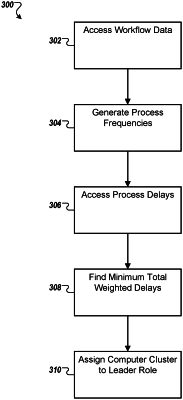| CPC G06F 16/27 (2019.01) [G06F 16/25 (2019.01); G06F 16/955 (2019.01); H04L 67/1023 (2013.01); H04L 67/1025 (2013.01); H04L 67/1097 (2013.01); H04L 67/52 (2022.05)] | 18 Claims |

|
1. A computer-implemented method executed by data processing hardware that causes the data processing hardware to perform operations comprising:
receiving historic data corresponding to a plurality of computing clusters, the historic data comprising past workload data;
predicting, based on the historic data, a future workload for the plurality of the computing clusters;
selecting, based on the future workload, a leader computing cluster from the plurality of the computing clusters, the leader computing cluster of the plurality of the computing clusters executing a distributed database, the leader computing cluster responsible for proposing operations for the plurality of the computing clusters to perform on the distributed database;
monitoring interactions between a client application and the distributed database;
generating workload data representative of the interactions between the client application and the distributed database;
determining, based on the workload data, that a different computing cluster of the plurality of the computing clusters has less communication delay than the leader computing cluster; and
assigning, based on determining that the different computing cluster has less communication delay than the leader computing cluster, the different computing cluster as a new leader computing cluster.
|